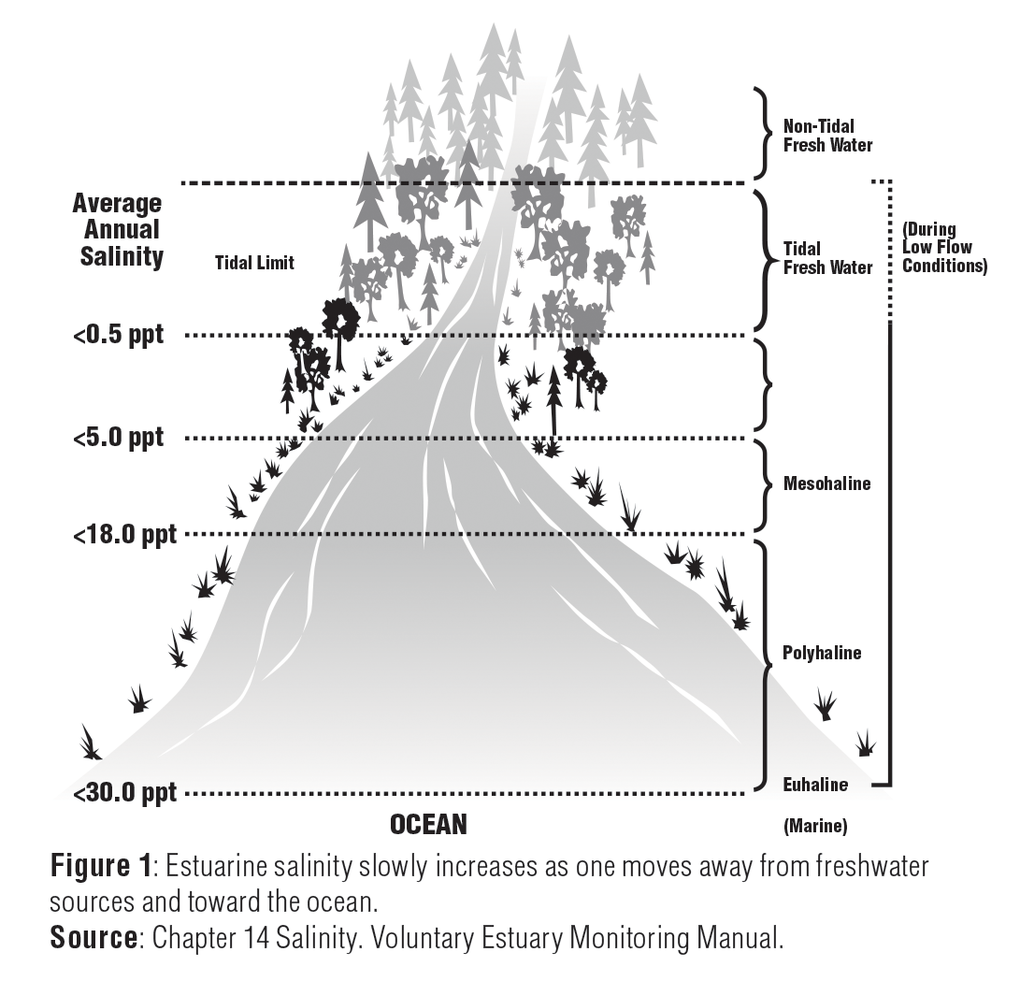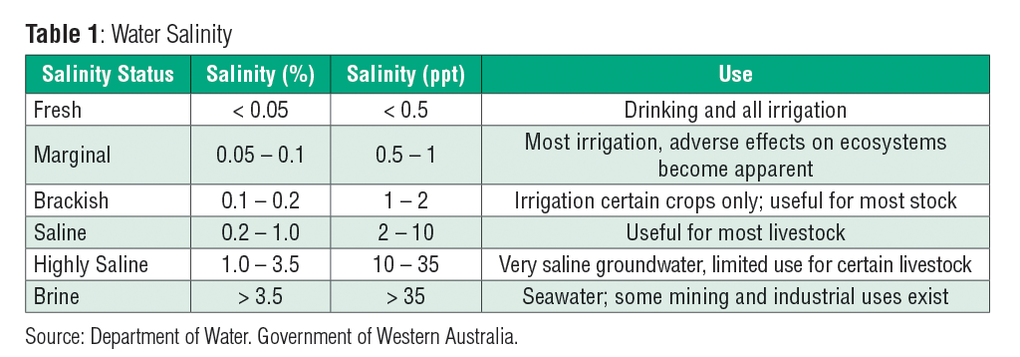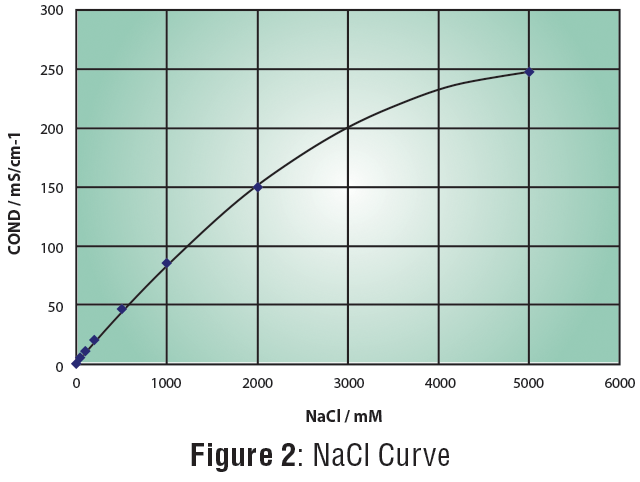Describe Two Ways to Measure Salinity
The main unit thats used to measure the amount of water salinity is ECw which stands for the amount of electrical conductivity in water. PSU- Practical Salinity Units parts per thousand 000 Name the six major ions that occur in seawater.

Measuring Salinity Of Water Horiba
This organic matter absorbs the ultraviolet light and decomposes to release tannin an organic pollutant that causes.

. There are two good ways to measure salinity and one is called a hydrometer. Describe three ways that polarity of water molecules affects the behavior of water. Oceanographers measure salinity by measuring the electrical conductivity of seawater.
You can measure the salinity of a sample of seawater at home in a beaker by evaporating the water and weighing the salt left behind at the bottom of the beaker since the salt will not evaporate. What units is Salinity measured in. The electrical conductivity or EC of a soil or water sample is influenced by the concentration and composition of dissolved salts.
A hydrometer is the simplest method for determining salinity but also one of the least accurate. We review their content and use your feedback to keep the quality high. If you calibrate to 1000 and you are looking for 1025 chances are good that your actual reading is around 1027.
Conductivity- this is an indirect method. Repeat mixing two additional times during the next 30 min. In the past century only two major methods have been used in the oceanography for measurement of the seawater samples salinity.
When hydrometers fail it is usually a result of being dirty or occasionally from being damaged dropped etc. Normal seawater has an average of 35 parts of dissolved salt per thousand parts of water or 35 ppt. It is important to understand salinity the amount of dissolved salts in water because it will lead us to better understanding of the water cycle and can lead to improved climate models.
Salts increase the ability of a solution to conduct an electrical current so a high EC value indicates a high salinity. Karl Mohr 1Chlorinity Titration. Salinity in seawater is measured in parts per thousand ppt or practical salinity units psu.
Water and soil salinity are measured by passing an electric current between the two electrodes of a salinity meter in a sample of soil or water. Alternative 11 or 12 Soil to Water Salinity Measurement 1. What Tools Could Be Used to Measure Salinity.
You should be using a solution that calibrates to the area you are checking. Compare the boiling and freezing points of pure water with the boiling and freezing points of salt water. Experts are tested by Chegg as specialists in their subject area.
Chloride Sodium Sulfate Magnesium Calcium Potassium. Salinity 33 to 37 psu Temperature. Ions dissolved in seawater enable an electric current to pass through.
Electromagnetic mapping Electromagnetic mapping instruments of which there are many types to choose from maybe useful for large-scale testing. Weigh or scoop 20 g 005 g of soil into a 125 mL beaker or similar container. One way is by taking a sample of seawater in a beaker by evaporating the water and weighing the salt that remains at the bottom of the beaker.
Name two instruments to measure Salinity. Describe two ways to measure salinity. Add 20 mL or 40 mL of DI.
Outside of a reef tank there are other situations or different tank types that require. However using an electrical conductivity sensor to measure the salinity of water will provide you with a different measurement unit of mScm which is the amount of milliSiemens per centimeter in the water. 0 to 5 C.
Salt is any molecule comprised of a cation such as sodium potassium and calcium 2 and an anion such as chloride - and sulfate 2-. Conductivity of seawater is used as a proxy for salinity determination. Coloured or chromophoric dissolved organic matter CDOM occurs naturally in water bodies.
These are easily used and while not hyper accurate they are certainly accurate enough to successfully keep the vast majority of things from your Local Fish Store. 0 to 10 C. Red colors represent areas of high salinity while blue shades represent areas of low salinity.
Describe two ways to measure salinity. We use a conductivity sensor to get estimate reading of salinity. Chlorinity titration and conductometry.
Water to the beaker and stir with glass or Teflon coated rod until well mixed. As a general guideline for saltwater reef tanks it is best to maintain a salinity of 1026 or 35ppt or 53 mScm conductivity to most accurately match the ocean. Salinity 34 to 35 psu.
By comparison fresh water has just. Sodium chloride NaCl is the most common salt in groundwater and soils in Western Australia. This is also very useful for determining the consistency of water and the amount of pollutants present.
The purpose here is to describe the different methods of measuring the common salinity of water. Salinity 33 to 37 psu Temperature. Another way to measure salinity is by measuring the electrical conductivity of seawater.
0 to 15 C. 100 1 rating 20. You always want to calibrate testing equipment to the range in which you are testing.
Describe two ways to measure salinity. Salinity is a measure of soluble salts in soil or water. There are several ways of measuring common salinity to include electrical conductivity specific conductance density chlorinity and refractive index.
Describe one factor that causes salinity to increase and one factor that causes salinity to decrease. BRS has a solution that matches to 35ppt. Here are seven ways to measure and monitor the water quality encouraging a clean and healthy aquatic ecosystem.
Refractometers are some of the simplest and most common tools for obtaining a reasonably accurate.

Measuring Salinity Of Water Horiba

Question Set Using A Hydrometer To Determine Density And Salinity Manoa Hawaii Edu Exploringourfluidearth
Salinity Measurement And Unit Conversion Salinity Management

Comments
Post a Comment